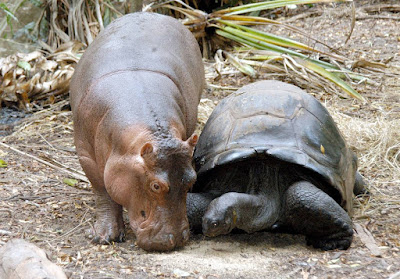 Wild Orca, Photo by Gerard Lacz
Wild Orca, Photo by Gerard Lacz
Tilikum, the Orca that killed his trainer at SeaWorld Orlando yesterday, was doing what his kind do naturally. Had he not been taken as a captive and kept isolated for so many years ― he was captured near Iceland in 1983 and kept in small tanks from the beginning of his time in captivity, essentially, confined to a cement box filled with water ― such a tragedy would not have happened. Dolphins and Orcas are driven mad in captivity, in part due to the lack of freedom to swim as they can in the wild and the deafeningly loud noise levels in those parks. SeaWorld Orlando acquired 'Tili' in January 1992, and put him in a breeding program shortly thereafter. Over the years, Tilikum sired at least 17 calves, 10 of which are still alive, making him the most "successful" orca father in captivity. He is also the only captive killer whale to become a grandfather. Imagine what his life in the wild would have been like!
Marine biologist Nancy Blake, said: "He was used a lot [by SeaWorld] for mating, and could have even been enacting a mating behavior during the incident," explained Blake, a leading expert on killer whales who runs California's Monterey Bay Whale Watch.
His captivity, frequent breeding and the fact that Tilikum was caught in the wild could all have contributed to Wednesday’s fatality, Blake believes.
"It is my understanding that he is often kept by himself," she said. "That is not natural. Males in the wild generally live with their mothers and other family members. Such social contact is critical to their development."
She said he may even have "lashed out" at Brancheau due to "stress and boredom."
Richard Ellis, a marine conservationist at the American Museum of Natural History, agrees that the whale "was not trying to eat the trainer," but believes the marine mammal's actions were "premeditated" and intentional.
"He decided to do this as opposed to keep swimming around in circles," Ellis said in a televised interview with the Associated Press. Ellis would not speculate, though, on what the whale actually intended.
Captive killer whales are fed 140 to 240 pounds of food, mostly fish, per day, according to the Orlando Sentinel. It is therefore unlikely that the whale would have suddenly viewed the trainer as prey, especially as hunting is a learned and repetitive behavior, Blake said.
Killer whales in the wild also do not target humans as prey. In fact, "there are no documented cases of killer whales attacking a human in the wild," according to an American Cetacean Society fact sheet. An ACS spokeswoman said that society does not believe killer whales should be kept in captivity.
For more about what life is really like in captivity for Orcas and Dolphins, click here.
 Daddy and Cesar
Daddy and Cesar








